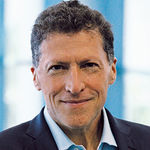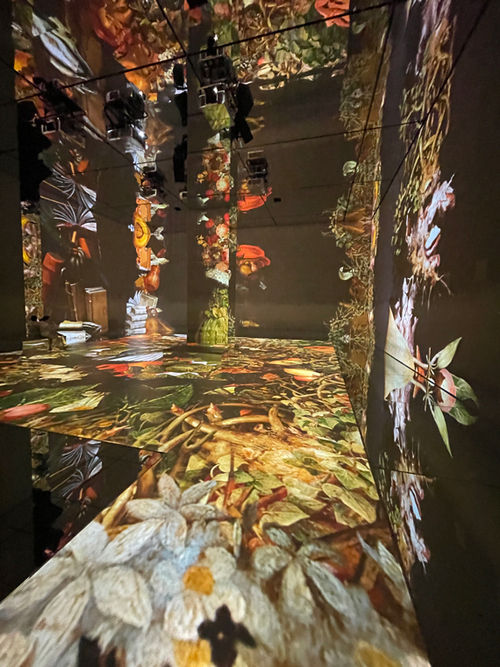
Arnie Weissmann
Travel Weekly has reported extensively how AI may impact travel planning and booking. On a trip to the U.K. this month, I looked at how it's affecting tourism experiences, as well.
Seeking a little contrast, I divided time between tradition-bound enclaves and some attractions whose foundation was frontline technology.
To American eyes, the U.K. is particularly rich with tradition, and I could think of fewer places near London that revel in custom more than Cambridge and Oxford. I planned daytrips to each.
In Cambridge, I met up with John Shears. He's an authority in a certain realm of past English endeavors -- polar exploration -- but also recently employed highly advanced technology as expedition leader of the mission that found Antarctic explorer Ernest Shackleton's ship, Endurance, in the depths of the Weddell Sea last year.
We arranged to meet at Cambridge's Scott Polar Research Institute, named for the Antarctic explorer Robert Falcon Scott, at precisely 10:30 a.m. The timing was not coincidental; that's when, each morning, a ship's bell is rung and the staff gathers for tea or coffee. While this custom (minus the ship's bell) was routine in American institutions in the not-too-distant past, it has been more recently cast aside in favor of a quick Starbucks run. The 10:30 gathering of colleagues at the institute seemed a curiously quaint and quintessentially British ritual.
As we wandered through the institute's multistory library containing thousands of volumes related to polar exploration, many old and rare, I didn't see a computer in sight. Was the collection digitized? I asked. It has not been.
Although the library requires permission to enter, the building also houses a small museum visited by 50,000 people annually. Even before going in, one walks past a sculpture created by Scott's widow, Kathleen, then enters beneath a bust of Shackleton into a small hall embedded with architectural details related to exploration in the arctic regions. The museum is polar-nerd heaven.
That night, back in London, my inner tech nerd -- or, I guess, just nerd -- emerged. I had bought a ticket for "ABBA Voyage," a somewhat disorienting journey into an almost purely artificial world. In a purpose-built theater, ABBA Arena, the 1970s Swedish pop group gives a 90-minute concert without any members of the group actually present.
The groups' four members come alive, seemingly human-size and in three dimensions, on densely pixilated LED screens, their movements in sync with enhanced concert footage displayed on giant screens. The entire experience is not unlike a typical arena concert. A creative 360-degree light show augments the songs. The effect is surreal, but real enough that the audience applauds and even stomps its feet for an encore, which it gets. I wasn't sure which was more mystifying, the onstage "ABBAtars" or the audience.
The next day, another friend, a professor at Oxford, walked me through Jesus College, whose centuries-old chambers seemed straight out of a "Harry Potter" book. Among the items displayed in its library is T.E. Lawrence's (Lawrence of Arabia) dissertation on Middle Eastern military architecture, complete with penciled notes in the margins. Although the tour represented submergence in another era, it was a familiar reality, requiring less cognitive adjustment than the interior of ABBA Arena.

Inside the "Beyond Reality" gallery at London's Frameless experience. Photo Credit: Arnie Weissmann
From there, back to London and "Frameless," a permanent art exhibit with no paintings or sculptures. It's a series of galleries, each featuring a different artistic genre. It's among the growing collection of attractions described as "immersive," from Las Vegas' new Sphere to the city's ever-expanding Area 15 complex.
"Frameless" is a technological and design marvel. It has four thematic galleries that together animate 42 paintings. The galleries have no wasted space, with floors, walls and sometimes ceilings becoming the canvas for moving, and occasionally interactive, imagery.
The collected art passes through you rather than the other way around. Images flow, dissolve, throb and explode. In one gallery, after a wall-size masterpiece shatters into shards on the floor, you can kick the debris, scattering flakes of colored light like autumn leaves as you move.
Princess Cruises' president, John Padgett, speaking at the Phocuswright Conference this week, said technology should be employed as a facilitator of personalized, up-to-the-moment experiences at scale. Technology is not the point, he said. Experience is.
I did unsuccessfully inquire whether "Frameless" employed AI, but the platform is beside the point: The technology behind both "ABBA Voyage" and "Frameless" can't be separated from the wow factor. The experience of cutting-edge innovation becomes part of the story that's repeated. I doubt Padgett would be upset if guests returning from a Princess cruise weave the high-tech wonders of the Ocean Medallion into their vacation tales.
Immersive experiences will not overcome interest in tradition and the past, whose remnants, still in use or dormant, often reflect earlier stages of trailblazing technology. Whether examining Shackleton's self-designed boots or seeing the clock turned back on Agnetha, Benny, Bjorn and Anni-Frid, technology and experience have become inseparable.